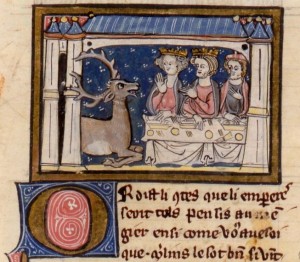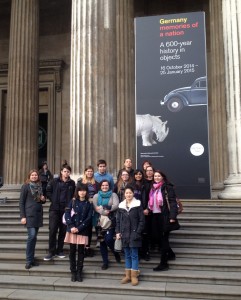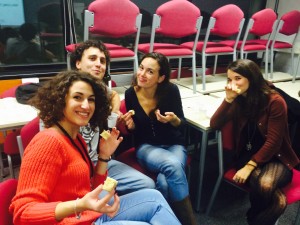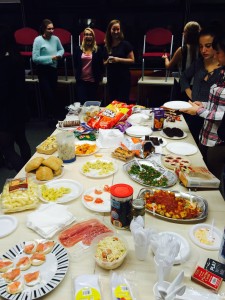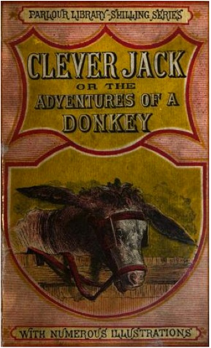
Professor Andrew Knapp
In August and September 2014, Professor Andrew Knapp delivered a series of public lectures in France on the subject of bombing. What is more, between 3 and 5 September Professor Knapp attended and spoke at a conference entitled ‘Bombardement 44: Le Havre, Normandie, France, Europe: Stratégies et Vécus’ held in Le Havre. More than a purely academic event, the conference was integrated into the City of Le Havre’s commemorations of the 70th anniversary of the city’s destruction by RAF bombing prior to its liberation on 12 September 1944. The City had a particular purpose in commemorating the bombing: it is seeking to confront and understand what is still a traumatic memory, before moving on to celebrate the 500th anniversary of the founding of Le Havre by Francis I in 1517. The commemorations attracted considerable media attention, in the course of which Professor Knapp took part in midday and early evening regional television news programmes live from the Place de l’Hôtel de Ville in Le Havre on 6 September.
We asked Professor Knapp to share with us some reflections on these lectures, the events they commemorate, and his ongoing research endeavours.
All the talk these days is of planning and managing research. Well, when I started thinking about the bombing of Le Havre some eleven years ago, I had no idea that it would lead to two books (so far), a film, a full-page article in Le Monde, three conferences, and a lot of excellent new colleagues, as well as some remarkable, and humbling, witnesses and survivors, not just from Le Havre, but across France.

Le Havre, January 1945 (Archives Municipales du Havre, collection Fernez).
I first went to Le Havre in 1979 to work on my doctoral thesis in politics. Anyone interested in French politics at the time was fascinated by the Parti Communiste Français, and curious as to what it would do if it ever returned to national office. My plan was to find out what they did at local level, so I went to Le Havre, then France’s biggest Communist municipality, to look. I had known before I went that the town had been heavily bombed by the RAF; but only when I saw the giant photo of what it had looked like in the winter of 1944-5, hung in the 1950s Town Hall in the middle of the 1950s city centre, did I get the measure of how bad it had been.
But my research wasn’t about that; it was about how the Communists ran the town. So I spent five years (longer than they allow you these days) doing a thesis, and got a D.Phil., and went through the usual series of fixed-term posts, plus three years as an editor with Oxford University Press, before I fetched up at Reading in 1990, now all set to do another project called Gaullism since de Gaulle. For all this time, and up until about 2005, I thought of myself as a politics specialist (a political scientist, as the Americans would say), not (although my first degree was in history) as a historian. What’s the difference? Most political scientists like to generalise, to use cases and comparisons to build or contribute to or modify or demolish general theories about how politics works, in a way analogous to the natural sciences. Most historians are more interested in particular people and processes and events. The two disciplines overlap, but they have tended to diverge in my working lifetime, with the study of politics becoming more theoretical and less like contemporary history. One of the beauties of working in a language department, though, is that you can switch between the two without anyone caring (or even necessarily knowing).
That is what I did about a decade ago. It started with Jim Knowlson, our Emeritus Professor and author of the standard biography of Samuel Beckett. Jim introduced me to Doug Attwood, a retired dentist who was thinking of doing a thesis on the bombing of Le Havre. I lent Doug my thesis and we got talking. He soon took the wise decision to enjoy his retirement, but for a while we had a plan to do an article together. Eventually Doug pulled out of that project too, but by then I was hooked. I wanted an explanation for that photo in the Town Hall; I wanted to find out why the town that I had first visited a quarter-century earlier, and had returned to regularly ever since, had been flattened by France’s friends and allies.
If my knowledge of Le Havre was pretty good – I had lived there for four years – my acquaintance with the air war was limited to what a boy growing up in the 1960s had gleaned from making kit aeroplanes. And I was frankly pig-ignorant of the military history of France in World War 2. Above all, I really thought that Le Havre was a one-off, that the Allies had bombed this French city but no others to speak of. Only when, during a visit to the archives in Le Havre, I came across Eddy Florentin’s book Quand les alliés bombardaient la France (Paris: Perrin, 1997) did I realise that the attacks on Le Havre, aimed at dislodging the German garrison there, were the culmination of an Allied bombing campaign against targets throughout occupied France waged since the defeat of June 1940. What had started as a short summer project now seemed to hold the potential for something much bigger.
Ignorance, though, was a wise counsel. Having finally finished off various politics projects, and taken the summer of 2006 to write an article on ‘The Destruction and Liberation of Le Havre in Modern Memory’, I decided to ask a proper historian to read the manuscript before I submitted it for publication. I chose Richard Overy, on the strength of his excellent book The Air War 1939-1945 (London: Europa, 1980). At this point luck intervened. Richard happened to be putting together a team to bid for an AHRC grant on bombing in Western Europe – not from the perspective of the bombers, but from that of the states and peoples on the receiving end. He asked me to come in and cover the French side, alongside himself and Claudia Baldoli (who took care of Italy). The AHRC accepted our bid and suddenly, in September 2007, I had not only the ambition to move from the article about Le Havre to a bigger work on France, but the means to do so. In particular, travel funds allowed me archive time not only in Paris but also in a range of provincial cities – Rouen, Nantes, Rennes, Saint-Lô, Marseille, Lyon, Toulon – where the impact of air raids had been greatest. Such visits would have taken many months only a few years before, but the digital camera has changed that: the speed with which it can capture images of documents meant that I rarely spent a week in a single place. More than any other piece of kit, my little Canon helped get the AHRC value for money.
Like many academics, I incline to the ‘lone scholar’ habit of work. But the AHRC grant brought me into a research team. ‘Bombing, States, and Peoples in Western Europe’, as our joint project was called, included, as well as Richard Overy, Claudia Baldoli and myself, two postdocs (Stephan Glienke and Vanessa Chambers) plus two excellent Ph.D students, Marc Wiggam at Exeter with Richard, and Lindsey Dodd, who worked at Reading with me. And the team model was a real success. The chance to meet regularly with valued colleagues and compare progress on our shared interest was hugely rewarding, all the more so as we were now well financed, and had in Richard a mentor whose erudition was matched only by his intellectual generosity.

The first minutes of the attack on Le Havre, 5 September 1944 (The National Archives, WO 223/29)
I began work on France in tandem with Lindsey Dodd, who had previously studied French history at Sussex with the remarkable Professor Rod Kedward. Our relationship at the start was an odd one because, unlike most Ph.D. supervisors, I was almost as much of a newcomer to the subject as she was. Neither of us knew much about which French targets the RAF and the Americans had gone for, or why, or how the French had reacted. The obvious way forward was to head off to the National Archives together and write a joint article. The result, ‘“How Many Frenchmen did you kill?” British Bombing Policy Towards France (1940-1945)’ appeared in French History late in 2008 (a year after my Le Havre piece had made it into War in History). Then Lindsey started on her own search for survivors from Brest, Lille and Boulogne-Billancourt. They would supply the material for her unique contribution to our collective bombing project, which was to develop and deploy the skills and interest in oral history which she had begun to acquire at Sussex. Her thesis on ‘Children under the Allied Bombs: France 1940-1945’ got her a Reading Ph.D in 2011.
As for my plans, when Richard had asked early on ‘What do you think we should offer in the way of outputs?’, my immediate choice was a joint book on France and Italy, to be done with Claudia. Comparing these two countries – largely left out of accounts of Europe’s bombing war hitherto – would be both innovative and in the spirit of the team’s collaborative ethos. Fortunately Claudia agreed: even more fortunately, she was brilliant to work with. That is reflected in the end product: whatever its faults may be, our book Forgotten Blitzes (London: Bloomsbury, 2012) is a genuinely joint work, with the material on each country juxtaposed and dovetailed and compared in every section of every chapter.
The AHRC project ended – or at least, the money ran out – in September 2010. The AHRC seemed to like what we had all done; at least, they rated us ‘outstanding’. By then the project had acquired enough momentum to carry on under its own steam. Claudia got most of us invited to Florence to a symposium about the bombing of Italy late in 2010. The main project book (also called Bombing, States, and Peoples in Western Europe) appeared with Continuum in 2011, and Forgotten Blitzes a year later. My work fed into the Leverhulme-funded ‘Liberal Way of War’ project here at Reading, and to an edited book with Hilary Footitt (Liberal Democracies at War) that came out with Bloomsbury in 2013. Richard’s monumental The Bombing War appeared with Allen Lane a few months later. Lindsey’s thesis should appear as a book in 2015.
Meanwhile I had been contacted from France. This started quite early on, rather to my surprise. First Patrick Facon, one of the rare French specialists on bombing, asked me to a conference in Paris in June 2007. I don’t know how he got hold of my name, as I had published nothing in the field then. But a short book came out of it, including a French version of my Le Havre article. On the strength of that, in 2008, Dominique Monteiro of Aber Images, a TV production company based in Brest, asked me to help with a documentary. Nothing much came of that until 2011, when I was interviewed, on the fourteenth floor of Le Havre’s Town Hall, for ‘Nantes sous les bombes alliées’, an hour-long programme which went out on French regional television in November 2012. The director, François Gauducheau, did a remarkable job, cutting and editing archive footage, plus interviews with three historians and half a dozen survivors, into a compelling narrative without a word of voice-over.
An altogether more ambitious proposition came to me in 2011 in an e-mail from an independent documentary-maker, Catherine Monfajon. She proposed a documentary on the bombing, not of a single city, but of the whole of France, and for national prime-time television. Catherine and I met in Paris that December and I passed her everything I had written and my whole computer archive. Perhaps it was on the strength of that that she asked me to be her historical consultant. This proved hard work. Whereas François Gauducheau had taken a back-seat approach, letting the footage and the interviewees speak for themselves, Catherine wanted to understand everything, to write the script (there would be voice-over, and interviews with survivors but not historians), to frame the narrative her way. Her questions, as we worked together through autumn 2012, she in her house near the Gironde estuary, myself in Reading, were incessant. I must have sent her 50,000 words of e-mails. But she drew me into the project, and of course I learnt much more as I tried to find answers.

Le Havre Town Hall, 3 September 2014
One reason I wanted to work for Catherine was that it has always been at least as important to me to be read and heard and recognised in France as in the UK. I had always hoped to find a French publisher for Forgotten Blitzes. My first choice was Éditions du Seuil: they had done a French version of Gaullism since de Gaulle (which ran to a very self-indulgent 900 pages), and my wonderful editor from those days, Anne Sastourné, was still there. But nothing doing: too specialised, too technical, they said. Ah, but Anne had a friend at Tallandier, Dominique Missika, and it might be more her cup of tea. It was – largely, I think, because of Catherine’s film. If there was a tie-in with a prime-time documentary, said Dominique, and if it all happened in spring 2014, in time for the 70th anniversary of the Liberation of France, then perhaps a book about bombing could work. Of course, there could be no question of paying a translator to do the job. If there was going to be a French book, I was going to have to do it, as I had done Le gaullisme après de Gaulle for Seuil.
A French book, yes; but not the same book as Forgotten Blitzes. To begin with, Dominique wanted a book about France only. Out went the Italian half, rather to my regret. Claudia, as ever, was understanding and let me go ahead. Then again, Dominique wanted more statements from survivors. That was fine: I could use material for which there had not been room in the English book. And I soon realised that while there were things that I did not need to explain to a French audience (who would know more than a British one, about France’s wartime Vichy regime, for example), there were other things that had to be gone into more deeply – in particular the British and American reliance on air power and on bombers, on which the French literature is sparse. So this was not so much a translation as a complete rewrite, from the different perspective – almost a different persona – that I find I take on when I start writing in French. That said, Dominique was not so foolish as to leave me without a linguistic safety net; she made sure the excellent Jean-François Mathieu was there to check my grammar…
Les Français sous les bombes alliées came out with Tallandier in April 2014. A month later Catherine’s film, La France sous les bombes alliées, was shown on France 3 to an audience of 3.4 million. Then I sat down with Sylvie Barot (virtually – we were about 200 miles apart) and wrote a press article about French civilian casualties in the battle for Normandy. As the former municipal archivist in Le Havre, Sylvie had been there when I began researching local Communism thirty-five years ago, and was an ideal partner for this project. Our piece made it onto a full page (or nearly) of Le Monde on 2 June, four days before the D-Day anniversary commemorations. And on the strength of it the two of us were invited (along with several hundred other people – we seemed to be surrounded by US Navy officers) to the presidential grandstand for the celebrations on the beach at Ouistreham. President Hollande’s speech at Caen on the morning of that 6 June had made specific mention of the French civilians who had died in air raids – the first time a French president had made such a public acknowledgement on such a day.

Ouistreham, 6 June 2014: President Hollande emerges from the sand on a giant screen
The summer of 2014 brought me as close as I am ever likely to get to Andy Warhol’s fifteen minutes of fame: several public lectures, radio and press interviews, two (short) television appearances, and a big conference in Le Havre in September. My respect for politicians rose slightly when a journalist shoved a microphone at me and asked for a sound-bite; like most people after a hard afternoon’s work, I said the first thing that came into my head, and it wasn’t very bright. Back in Reading, I am preparing to turn the Le Havre conference into a book, and planning two visits to Paris, one to speak to the French branch of Amnesty and one to talk about the contrasting memories of bombing in West European countries.
Although my work has been based more on archives than on oral witness statements, it has been my privilege to meet and correspond with survivors of the bombing. Here are a few. Charlotte Barbotin, who recalled how her Rouen suburb ‘seemed to have been ploughed up by a drunken titan’. Max Potter, son of the Daily Mail’s correspondent in Paris in 1940, who had become a Frenchman because that June, his family had missed the last boat out of Saint-Jean-de-Luz. Michèle Agniel, who with her family sheltered downed RAF aircrews (both her parents were deported to camps). Jean Costes, a former Red Cross worker from the Paris suburb of Juvisy, who wondered why the RAF used delayed-action bombs, when they so obviously put the emergency services at risk. My old friend Alain Épois – who had never spoken to me about these matters before I sent him the book – who at age 4, in April 1944, survived the 1,000 tons the RAF dropped on La Chapelle, apparently untroubled by the experience, but who found himself sobbing uncontrollably at the sound of a siren during the VE-day celebrations a year later (sirens still provoke unease among many survivors). Or the unknown woman, born in 1941, who told me that while of course she remembered the bombing, ‘our generation wasn’t supposed to have any memory: everything was supposed to have started afresh in 1945’. In direct contrast to the British case, where the Blitz has been woven into the national identity, Allied bombing has not formed part of the general narrative of France in World War 2. Catherine’s documentary was the first to deal with the subject at national level; my book was only the second to do so, after Florentin’s. One of our tasks had been to bring an experience remembered by tens, if not hundreds, of thousands of people, but barely acknowledged by historians, out into the open.
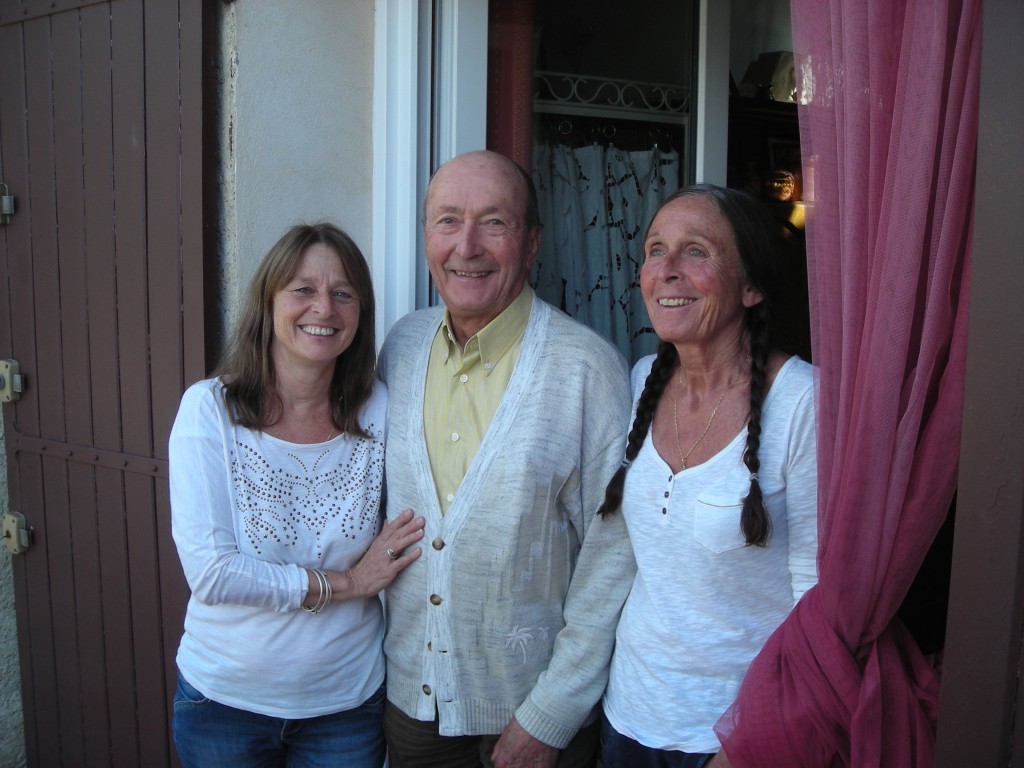
Jean Costes with niece Marie-Claire and daughter Marie-Odile
Seventy years on, none of these witnesses bore resentment at what they, or their towns or neighbourhoods, had suffered. But others, whom I met at public lectures in Le Havre or the little southern town of Sisteron, remained angry because they had never been given a satisfactory reason for the destruction of their towns and the killing of their relatives. For some, only the most sinister explanations would suffice. The Americans, apparently, had attacked Sisteron to show they were the new masters in Europe. The British had deliberately bombed civilians in Le Havre to pressure the supposedly ‘humanist’ German commanding the city’s garrison to surrender; or they had been trying to eliminate France as a post-war economics competitor.
I don’t believe these interpretations, for which there is no serious archival or other evidence. But the truth is quite horrible enough. However much I have enjoyed the project – and I have – the story I have to tell is a very dark one. The Allies dropped over half a million tons of bombs on France – nearly seven times what the British received at the hands of the Luftwaffe. Over 57,000 French civilians were killed – a figure barely short of the 60,595 British. That each was an individual tragedy was made clear to me at the archives in Rennes, where faces of the unknown dead stared out from the makeshift coffins in which they had been photographed for possible identification.
Certainly, some of the Allied raids, for example RAF 617 squadron’s attack on the Gnôme-Rhône engineering works at Limoges in February 1944, were well conceived and impeccably executed. Many others, like the big attacks on the French rail system in Spring 1944, had their military justification – slowing German communications before D-Day – but caused massive ‘collateral damage’ to French civilians and their homes because they were so imprecise: RAF Bomber Command’s report rated the raid on Juvisy as ‘outstanding’, although only 13.7 per cent of the bombs hit the target. A third category of raids, like those on Lorient in January 1943, on a series of quiet Norman towns on D-Day, or on Le Havre on 5 September 1944, had no military justification that would bear scrutiny. Under the treaties that Britain (though not the United States) has signed since the war, these attacks would be regarded as war crimes. Though neither the British nor the Americans tried to kill French civilians (as the British certainly tried to kill German ones), they displayed no great sensitivity to them either. Sir Trafford Leigh-Mallory, commander of the Allied Expeditionary Air Forces, could talk of ‘flattening out’ Norman towns at a planning meeting in January 1944; the Daily Express, on 6 September that year, thought fit to crow that ‘1,000 tons smash down on Havre’.
To look at it from the French side is to see a world turned upside down. It was the Allied liberators who rained down destruction on the French in 1944 (indeed, from 1940); the propagandists of the Vichy regime, which collaborated with the German occupiers, did not have to stretch the truth very far to underline the horror of the raids. And it was Vichy that tried, in extremely difficult conditions (the German occupiers caused shortages of both raw materials and labour), to organise rescue and relief. Of course, the regime had little choice. Not to be seen to try and look after civilians exposed to air raids would have lost Vichy what threadbare legitimacy it still had after 1942. For me, though, it was still odd and unsettling to find, in the archives, a succession of perfectly sensible circulars about civil defence or allowances for bombed-out families that were signed by men like Pierre Laval, René Bousquet, or even Joseph Darnand: some of the vilest figures of twentieth-century French history, all active in the repression of the Resistance and the deportation of Jews to extermination camps.
Did the French people fall for Vichy’s propaganda? Were they impressed by the regime’s efforts to take care of them? Opinion polls were still in their infancy and had in any case been forbidden since the start of the war. But like any self-respecting police state, Vichy did open everybody’s mail, listen to telephone conversations, and record the results with scrupulous care. The records show that many of the French welcomed the earlier raids, in 1942. They were not yet very widespread, and they proved that the British were still in the war and capable of hitting German targets. In 1943, however, opinion began to sour. That September, three American raids on Nantes claimed nearly 1,500 lives in just a week. Expectations that bombing was the prelude to a speedy Allied landing were disappointed. By the eve of D-Day, after three months of heavy raids on rail targets, French trust in the British and Americans had been stretched to breaking-point. One Resistance agent in France wrote that American ineptitude had done more to damage the Allied cause than four years of Nazi and Vichy propaganda. That did not mean the French were any friendlier to the Germans, whose occupation was becoming more oppressive by the day; or that they became any more convinced by the tawdry appeal of Laval and collaboration. But Marshal Pétain, the regime’s figurehead, could still draw impressive crowds when he attempted, in a series of brief and pathetic speeches during visits to Paris and other Northern cities, to share in the nation’s sorrows. At the other end of the spectrum, the British and Americans managed to make their ally Stalin look like a great humanitarian: ‘he would never have allowed something like this’, people said in Marseille after a raid of 27 May 1944 that left over 1,800 dead.
Whatever their opinion of the Allies, however, the French declined to take it out on the Allied airmen who dropped into their midst from the skies. The dead were treated with respect; the living – who in many cases had been bombing French targets minutes earlier – were hidden, and some 2,000-3,000 were spirited out of the country. In a glowing tribute to France’s civilian ‘helpers’ the head of RAF Bomber Command, Air Chief Marshal Sir Arthur (‘Bomber’) Harris, wrote that ‘Men, women and indeed sometimes even small children led our airmen from hiding place to hiding place. They tended their wounds, they bought them rail tickets, they carried them hidden in farm carts, they passed them safely through cordons and barriers, they misled and confounded the enemy’s search’ – all the time knowing that the penalty for aiding escapers was death.
Finally, the French helped one another, too. In their tens of thousands they joined the rescue and relief services, risked their lives to dig the trapped and wounded out of ruined buildings and carry them to safety, found space in their homes, and clothes, and money, and food, for the bombed-out. In the midst of my dark story, it was these acts of common human decency on the part of men and women of the stamp of Jean Costes, the Red Cross volunteer who carried stretchers through the wreckage of Juvisy one night in April 1944, that most inspired me. It was to them that I dedicated Les Français sous les bombes alliées. And I am proud to call Jean Costes my friend.
To learn more about Professor Knapp’s research, as well as for information about undergraduate and post-graduate study at Reading, please visit the website of the Department of Modern Languages and European Studies at the University of Reading. To keep up with all of the Department’s research, as well as to receive updates from our students, staff, and alumni, follow this blog, like us on Facebook, and subscribe to our Twitter feed.
If you would like to receive more posts like this, be sure to subscribe to our blog. Just enter your email address and we’ll contact you when we publish new material.
[subscribe2]








